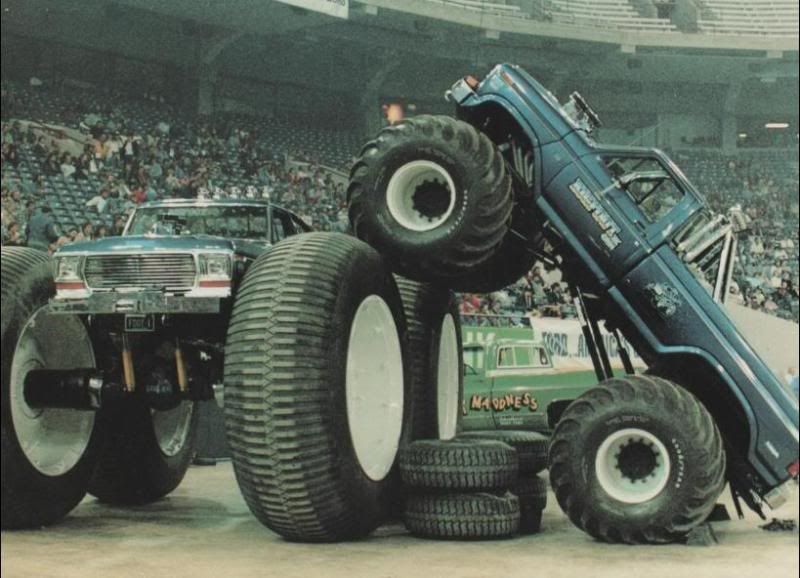We all know that monster truck tires are huge. However, how big are monster truck tires? Whether you’re a fan of monster trucks or just curious, you’ll likely be surprised by how much these tires weigh.
While monster trucks can come in all shapes and sizes, their wheels are typically all very similar in size. Keep reading to find out just how much these huge trucks weigh.
The average monster truck tire weighs about 800 pounds apiece. However, their weight can vary slightly based on how they are crafted. Because each tire is hand-crafted, it can weigh different amounts. It is quite difficult for a professional to get each tire weighing exactly the same, especially since they are generally not commercially produced.
There are quite a few factors that can contribute to a monster truck tire’s weight. Check out the rest of the article below for everything we learned about these interesting tires.
Without the rim, a single monster truck tire can weigh from 800 to 900 pounds. However, there are some substantial differences in weight from company to company.
Because these tires are not mass-produced, they can vary quite a bit. Even the best monster truck tire crafter cannot make all the tires weigh exactly the same.
Therefore, you can expect quite a bit of difference from tire to tire.
Some competitions and shows have specific weight requirements for tires. Others do not.
However, lighter tires are usually considered the better option. After all, lighter tires will perform faster, which is exactly what you want in a racing situation.
Monster truck tires are about 66 inches high. Usually, they’re about 43 inches wide as well. This size is quite large – even compared to an adult person.
In the name of fairness, many competitions have specific regulations on the size of the tires and wheels.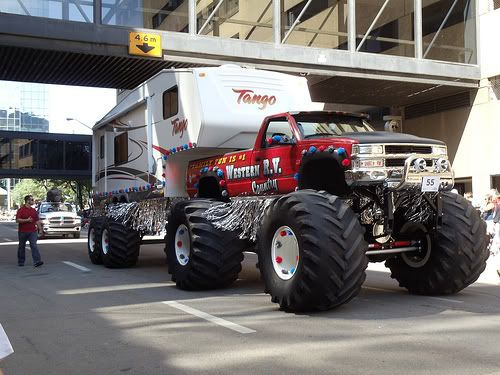
Generally, they fall somewhere close to the above guidelines. However, they can vary a little bit.
Both monster truck tires and truck tires are similarly larger, especially when compared to cars and similarly sized vehicles.
However, monster truck tires are far heavier than regular truck tires.
Your average semi-truck has wheels that weigh around 150 to 200 pounds. Compared to the average car tire, this is extremely expensive. However, it isn’t nearly as large and heavy as monster truck tires.
With that said, the farming equipment tires that are used to make monster truck tires are generally even heavier.
In fact, they are easily one of the heavier wheels out there!
Generally speaking, monster truck tire wheels weigh more than pretty much any other wheel used – including truck tires.
That doesn’t mean that truck tires aren’t heavy; they just aren’t nearly as heavy as monster truck tires.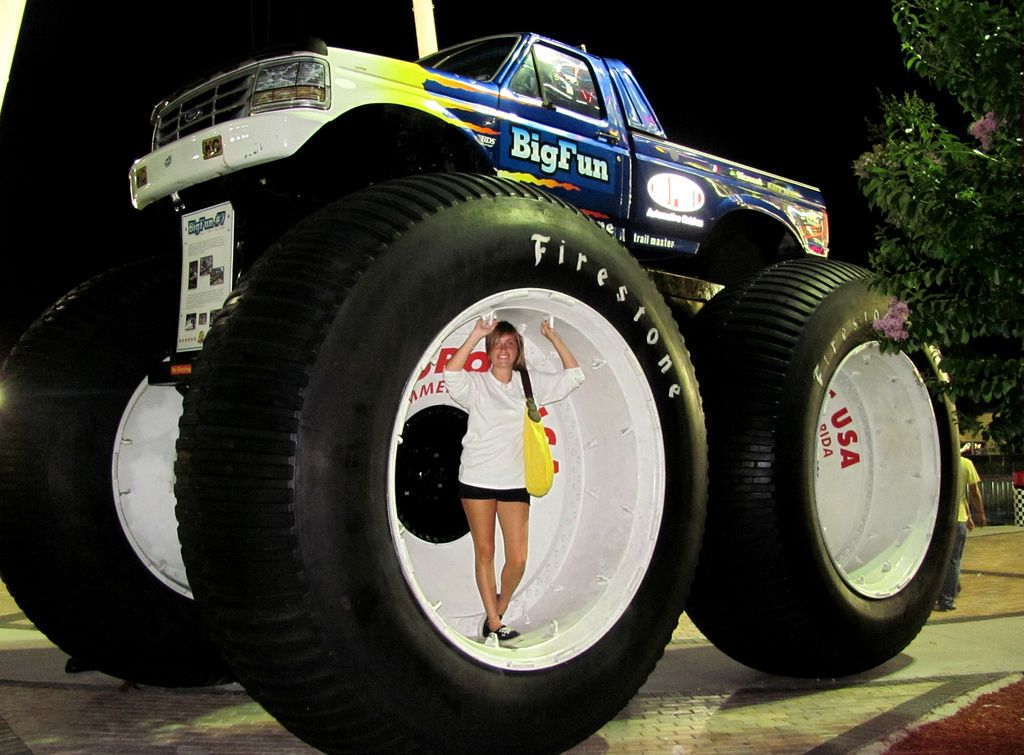
As you might imagine, monster truck tires are not commercially made. There is no factory pumping out truck tires. For this reason, they must all be custom-made.
Generally, most monster truck tires start out as something else. In most cases, they are used on larger machinery on farms. For instance, many were used on fertilizer spreaders and other machinery.
As you might imagine, monster trucks need huge tires. Therefore, farm tires are perfect for distributing this weight. After all, they were made for huge tires anyway.
However, these tires just can’t be plopped onto a monster truck. Instead, they have to be carved carefully by professionals. As you might imagine, there aren’t many of these professionals around.
Therefore, they can be exceedingly expensive. Their size can also vary somewhat. When you’re hand-carving tires, they’re bound to differ somewhat.
However, it takes a substantial amount of skill to get them close enough. You can’t use multiple-sized tires on the same car.
You can’t use multiple-sized tires on the same car.
Generally, it takes about eight to twelve hours to hand-sculpt a monster tire. Much of the tire’s high price comes from this substantial amount of professional time.
Most monster truck tires start out at about 1,200 pounds. However, during the carving process, a lot of the weight is removed.
In many cases, most professionals remove as much as 300 pounds of rubber are removed from each tire.
Therefore, the monster tires are generally lighter than the farm equipment tires they are made from. When it comes to racing, many monster tires producers want lighter tires as they perform faster.
In many cases, teams can also customize their tires with their own tread, since they are hand-carved.
However, this will affect the weight of the tire. Therefore, some weights vary depending on the weight used.
The average cost for a monster truck tire is about $2,600.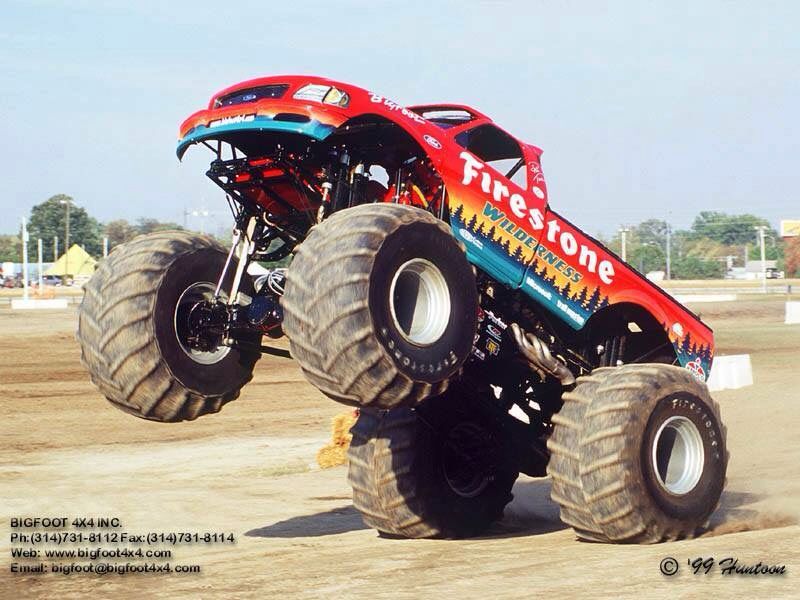 For four pairs of tires, that’s about $10,000. As you might imagine, the cost of tires is a huge expense for owners of monster trucks.
For four pairs of tires, that’s about $10,000. As you might imagine, the cost of tires is a huge expense for owners of monster trucks.
Obviously, the tires are so expensive because of all the material involved.
Furthermore, monster truck tires are also custom-made. As you can guess, there are no mass-produced monster truck tires.
If someone needs monster truck tires, they have to purchase them custom-made, which makes the price rise substantially.
Plus, it can take up to 50 hours to completely shape a monster truck tire. As you’d guess, all of that craftsmanship costs a substantial amount of money.
While tires can vary in weight, they are all about the same size. Officially, monster truck tires must be 66 inches high and 43 inches wide.
To be considered a monster truck, you often have to have wheels that fit into this category.
To know more about tires, you can also read our posts on how much do NASCAR tires weigh, how many tires does a school bus has, and how much do tractor tires weigh.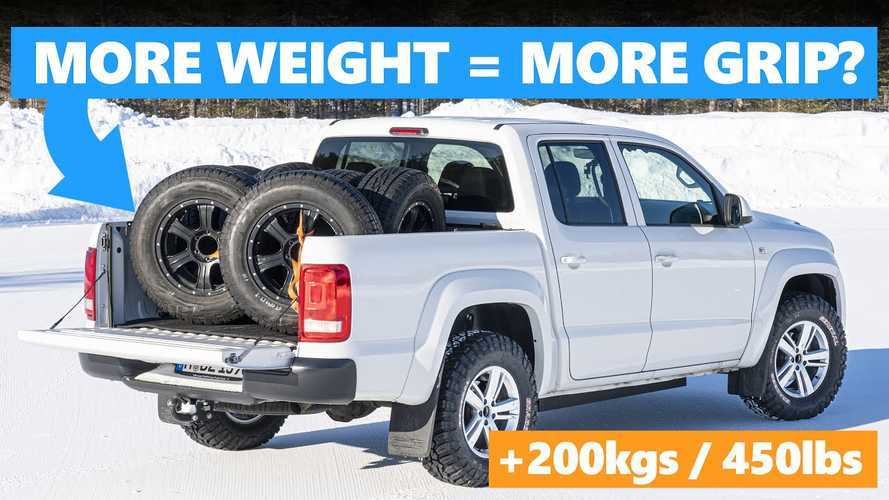
Monster truck tires typically weigh about 800 apiece. In total, that adds about 3,200 pounds to the truck.
However, tires can vary in weight quite a bit. For the most part, they are all custom-made. Therefore, there are bound to be quite a few differences between each tire.
Furthermore, different teams often order custom tread patterns, which can also affect the overall weight.
A monster truck traditionally comprises of a pickup truck that has been completely modified from its factory version and outfitted with larger tires as well as a bigger suspension. Although there are people who still drive modified pickup trucks, there has been an increased uptake of themed vehicles and SUVs (sports utility vehicles). Unlike in the past where metal was the common material, most bodies are today made using fiberglass.
When it comes to their weight, a monster truck is required to have a minimum weight of 10,000 pounds. There are, however, a few that have a total weight of 12,500 pounds. Weight is an important factor in monster trucks as it plays a direct role on the total strength that can be injected into its engine and body frame short of compromising its maneuverability and swiftness.
There are, however, a few that have a total weight of 12,500 pounds. Weight is an important factor in monster trucks as it plays a direct role on the total strength that can be injected into its engine and body frame short of compromising its maneuverability and swiftness.
The engine of a monster truck is normally methanol-injected, supercharged, and built according to custom specifications. Its sheer size alone means that the engine easily consumes two and a half gallons of gas with each complete run.
Its motor size is often limited to five hundred and seventy-five cubic displacement feet. For monster trucks taking part in professional or competitive shows, you will find that the team behind it will normally burn up to five engines in a span of twelve months. An average monster truck will cost around $250,000 while a single engine will cost you $50,000.
It is not possible to discuss monster trucks without mentioning their really big tires.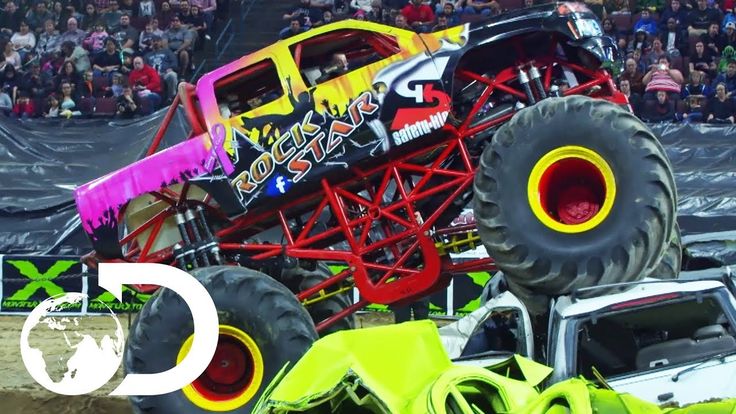 All monster trucks are required to run the same set of tires. The tires should be sixty-six inches tall and forty-three inches wide. Each tire ought to run between eight and ten lbs of pressure. This means that the tire will weigh between eight hundred and nine hundred lbs.
All monster trucks are required to run the same set of tires. The tires should be sixty-six inches tall and forty-three inches wide. Each tire ought to run between eight and ten lbs of pressure. This means that the tire will weigh between eight hundred and nine hundred lbs.
All tires used by the competitive or professional monster trucks are custom-made by BKT, Firestone, and Goodyear. BKT also happens to be the official tire supplier of many monster truck competitions, e.g., Monster Jam. The company also manufactures tires for use by agriculture machines as well as large farm tractors.
It takes an average of fifty hours to cut each tire to be used on a truck. Each tire costs an average of $2,600.
The axles in use by modern-day monster trucks are a custom build and tend to be very solid. The axles should be able to withstand the impact that can be dished out by the monster truck, its tremendous torque, as well as its horsepower.
In past years, monster truck designers relied on cast steel military grade axles.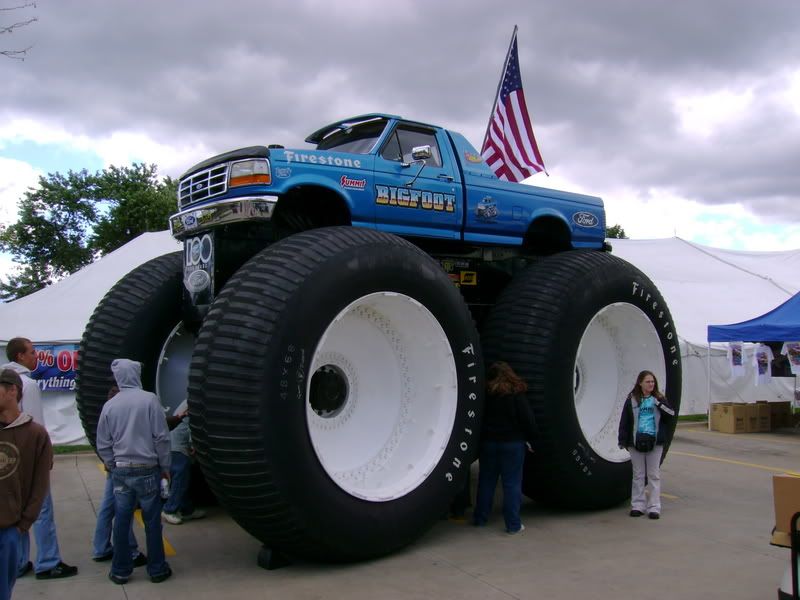 The problem with this set of axles is that they not only broke down more often, but they also happened to be very heavy thereby compromising their speed and swiftness.
The problem with this set of axles is that they not only broke down more often, but they also happened to be very heavy thereby compromising their speed and swiftness.
Each truck comes with two lockers: front and rear. The purpose of these lockers is to make sure that the differential is always engaged. They also serve to provide equal power to all the wheels in the truck. Provision of equal power is essential as it makes sure that even when all the other wheels are in the air and only one wheel is touching the ground, the driver is still able to accelerate without encountering any issues.
As mentioned earlier, the body of the average monster truck is constructed using fiberglass and not metal as many enthusiasts seem to believe. Its body is also custom designed depending on the theme that the team or truck owners want to go with for that particular truck.
Once the design is complete, the fiberglass is molded on to the frame. A body will on average cost around $15,000.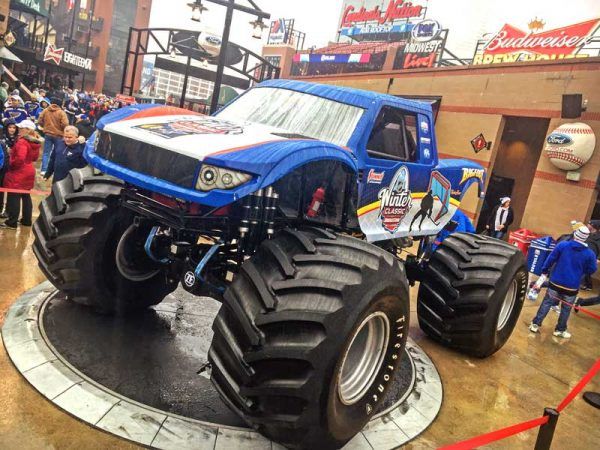 If you are looking for a remake, this will cost around $8,000.
If you are looking for a remake, this will cost around $8,000.
Many trucks are today using nitrogen gas shocks in their runs. There are those that use a single shock for each tire, while others choose to use two shocks per tire. Each shock package comes complete with a spring and coil-over-shock kit.
In many cases, the nitrogen gas shocks are installed in each and every corner of the monster truck. When combined, the shocks provide twenty-eight inches of travel. You can also easily adjust their firmness based on the train as well as the firmness of the track being used for the runs.
In the early days (early and mid-90’s), leaf springs were used on the trucks. The downside to this is that these springs were only able to provide between four and six inches of travel. This is in addition to breaking every so often.
It is, therefore, noteworthy to mention that the nitrogen shocks are considered to be a major improvement. These are shocks that make it possible for the truck to jump high and as far as possible.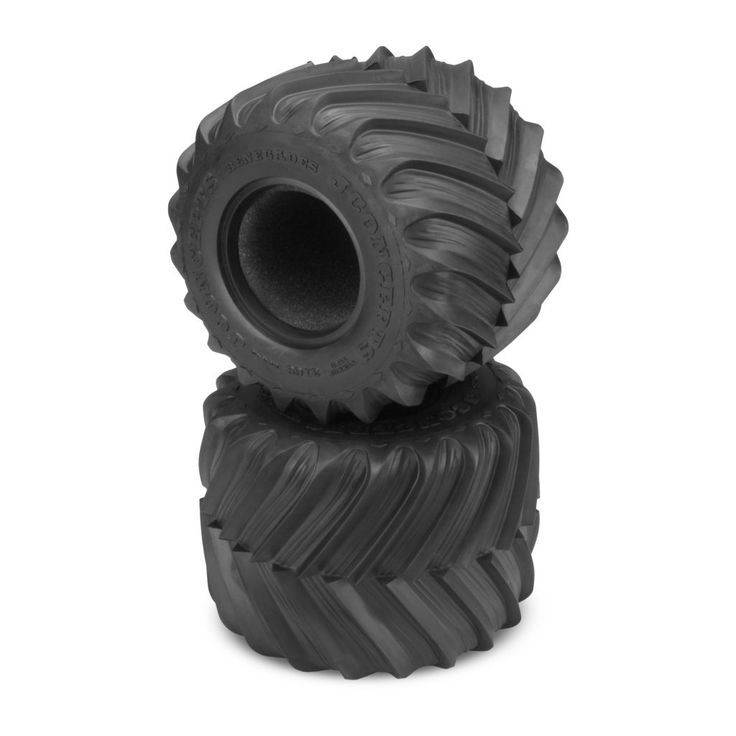 And after all, this is what the audience in the competition stands paid to see.
And after all, this is what the audience in the competition stands paid to see.
All trucks have to be painted in order to hide the rough fiberglass that makes up its body frame. Truck owners can choose to use vinyl wrapped stickers or opt for a professional paint job. Airbrushing is the recommended choice for those that want to paint their trucks.
Often, you will note that the trucks will need to be repainted after each and every show. For this to occur, the body must be removed from the truck, airbrushed and then replaced back on the frame.
The safety of the spectators, as well as that of the drivers, is always given priority when the trucks are being designed. Each truck comes with a number of safety measures which guarantees that even if any part breaks down, it will remain close to the truck and will not be thrown in the spectator stands.
A good example of such a safety measure is the installation of a braided steel cable. The cable is used to ensure that each and every wheel is securely attached to its axle. The purpose of this particular safety measure is to make sure that in case the wheel spindle breaks down, the affected wheel will not be thrown off, but will instead remain tied to the side of the truck.
The cable is used to ensure that each and every wheel is securely attached to its axle. The purpose of this particular safety measure is to make sure that in case the wheel spindle breaks down, the affected wheel will not be thrown off, but will instead remain tied to the side of the truck.
Another important safety measure that easily stands out in each truck is the presence of a shielded driveshaft. Each shaft, both in the rear and front of the truck must be caged in using bars and steel rings.
The purpose of this cage is to make sure that the shaft will not spin off from the vehicle once it breaks down. The truck’s brakes can be found at each shaft. This means that the truck does not have lots of mechanical gear or lines running across each tire.
All instruments panels are quite similar in that they feature the standard indicators for voltage, temperature, as well as oil pressure. Two handles that can be used to promptly cut power and fuel are also supplied.
Transmission is pretty basic. They comprise of automatic Powerglide transmissions with two gears. Here, the first gear is used to get the car moving before immediately shifting into the second gear as the RPMs begin to increase.
Given the size, torque, and horsepower carried by each engine, it is not uncommon to find trucks catching fire when on a run. As such, the trucks need to have a set of onboard extinguishers located close to its engine.
It is yet another safety feature which helps the driver put off any flames that may startup when they are on a run. Apart from the two extinguishers located close to the engine, there is another onboard extinguisher that is within the driver’s reach.
Based on all the features that have been described above, it is quite easy to see why all monster trucks are heavy and also why they cost a fortune to build from the ground up.
With hot rivals, giant monster trucks and even more outstanding personalities, the adrenaline-fuelled phenomenon Monster Jam® celebrates its 30th anniversary this year.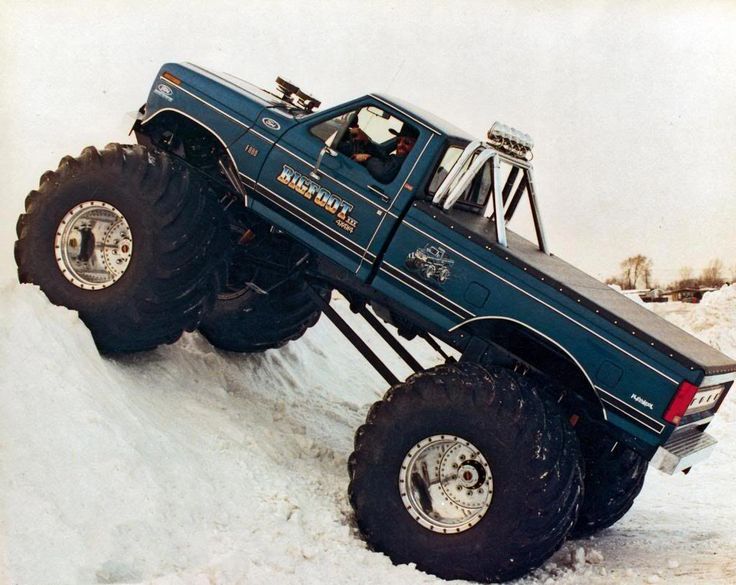
From humble beginnings in tractor pulling competitions in the 1970s to becoming a global phenomenon in more than 30 countries, the story behind this exciting phenomenon is almost as incredible as the stunts performed during the competition.
Today, world-famous 12,000-pound Monster Jam trucks such as the Grave Digger®, El Toro Loco® and Megalodon® draw spectators and draw stadiums around the world for multi-day events.
In this blog, we will explore the origins of Monster Jam and share some key facts about this truly unique motorsport.
In case you're new to Monster Jam, let's introduce you to it. It's an adrenaline-fuelled event where drivers drive 12,000 lb (5,443 kg) Monster Jam trucks that are engineered to perfection, pulling off impressive stunts such as back flips, driving skills on two wheels, and racing at speeds up to 70 mph. . Both male and female drivers compete against each other in various disciplines, using physical and mental strength and agility to perform gravity-defying skills.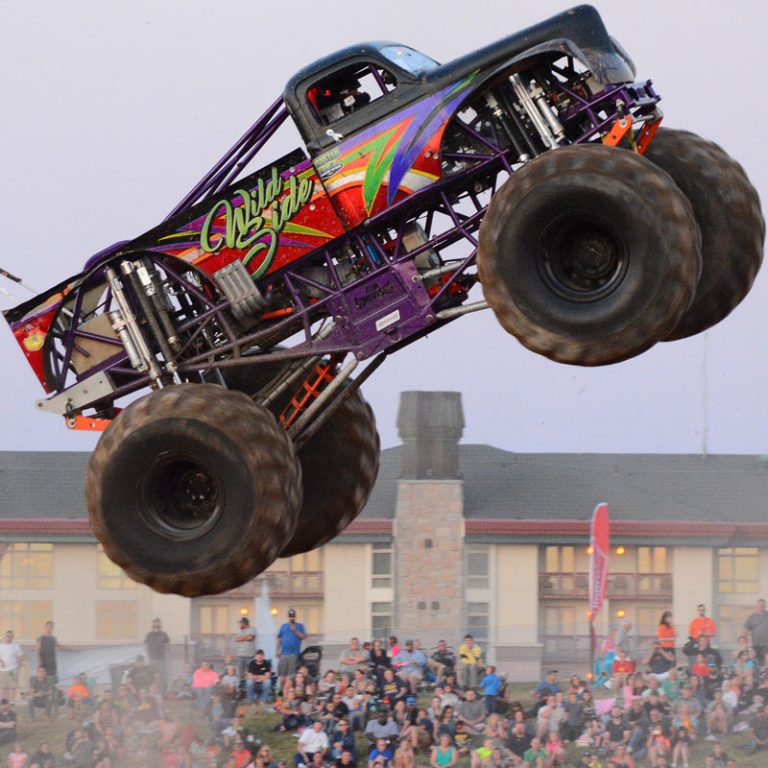
All of this action takes place in front of fan-filled stadiums and arenas around the world.
While Monster Jam is now a huge event attended by millions of people around the world, this unique form of motorsport has humble beginnings. The early pioneers of Monster Jam had no idea that these cars would become so popular and that they would become a popular motorsport in their own right.
The origins of Monster Jam were in the US in the 1970s during the modified truck craze, when heavily modified trucks with huge tires that reached 48 inches became popular. These trucks were used for sports such as mud rolling and pulling tractors.
In the 1980s, the monster truck craze reached its peak, and as technology and skills improved, as did the growing fan base, the sport began to develop into what we see today.
In 1992, the first official Monster Jam event took place, and in 1995, the American Hot Rod Association created the official Monster Jam show. Over the past 30 years, Monster Jam has continued to attract fans and has grown into a thriving global phenomenon.
Over the past 30 years, Monster Jam has continued to attract fans and has grown into a thriving global phenomenon.
Today at Monster Jam, you'll see expert drivers and iconic trucks rip through the mud and compete in intense speed and skill competitions.
During Monster Jam competition, drivers can compete in several different disciplines including:
Monster Jam is one of the most accessible fan sports in the world and that's a huge reason why Monster Jam has become so popular. Fans are "at the wheel" during the judging and can vote for their favorites during the competition. They can also mingle with drivers and get up close and personal with their favorite trucks during specially organized "pit parties" at the events.
Fans are "at the wheel" during the judging and can vote for their favorites during the competition. They can also mingle with drivers and get up close and personal with their favorite trucks during specially organized "pit parties" at the events.
As we said, Monster Jam trucks weigh an impressive 12,000 pounds.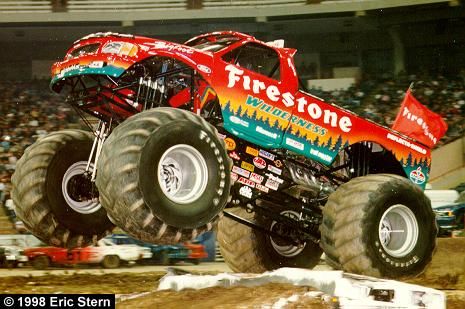 Each truck is approximately 10.5 feet high, 12.5 feet wide and 17.5 feet long. This means that Monster Jam athletes must demonstrate tremendous skill and experience in order for these giant machines to be able to perform stunts like backflips.
Each truck is approximately 10.5 feet high, 12.5 feet wide and 17.5 feet long. This means that Monster Jam athletes must demonstrate tremendous skill and experience in order for these giant machines to be able to perform stunts like backflips.
Monster Jam trucks use engines that can reach 1,500 horsepower. The sheer power of these machines is one of the reasons Monster Jam has attracted such a large number of fans around the world as an adrenaline-fueled sport!
Each Monster Jam truck is custom made from fiberglass. Over the years, competing trucks have competed for the most attractive design.
One of the most recognizable features of Monster Jam trucks are the huge tires. At the very beginning of monster truck competition, agricultural tires were used, which were designed to provide flotation and prevent sagging in muddy terrain.
The sport has evolved since its inception, with specially designed tires now used on Monster Jam trucks.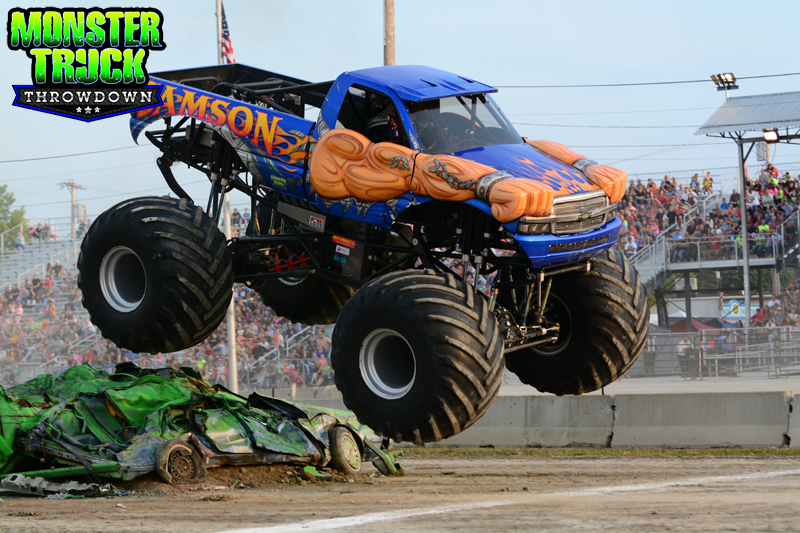 BKT tires have been used on all Monster Jam trucks since 2014. The tires are 66 inches (1.6 meters) in diameter and 43 inches (1 meter) wide. Together with the wheel, these tires weigh 645 pounds each.
BKT tires have been used on all Monster Jam trucks since 2014. The tires are 66 inches (1.6 meters) in diameter and 43 inches (1 meter) wide. Together with the wheel, these tires weigh 645 pounds each.
Monster Jam has evolved from humble beginnings in the US to events around the world including Europe, Singapore, Australia, Mexico, Saudi Arabia, Japan, the Philippines and more. But before monster trucks became the high-tech modern vehicles we see today, they were the passion project of off-road enthusiasts who never imagined their hobby would grow into a billion-dollar industry. It's safe to say that Monster Jam will delight audiences for years to come.
Return to list
Monster trucks and trucks in quarries and mines have a lot in common: they both run on giant tires. Each such tire can weigh as much as a small compact car. But giant tires are not only impressive for their weight.
The size of the black giants is impressive. Four meters high, one and a half meters wide, weighing six tons. They are strong enough to carry sixteen times their own weight. And constantly withstand very high pressure. Tires designed for use in quarries and mines are real monsters: where they pass, grass no longer grows.
But they have to travel not only in the mines. Sometimes these giants also appear on exhibition grounds. There they decorate the wheels of "bigfoot" monster trucks that show off in front of the public: jumping over other cars, crushing motorhomes and destroying entire yachts.
This giant is pitch black and measures 59/80 R63. This model is the development of the Japanese company Bridgestone. Even the tread depth is impressive: 11.6 cm.
These tires are 4.02 meters high and 1.47 meters wide. The cargo container against their background looks just like a donut box.
Hard Case: This tire weighs 5.75 tons. From the rubber that went into its manufacture, 600 ordinary tires for passenger cars could be made. And while ordinary tires can be simply rolled from place to place, moving this giant requires a truck with a low bed trailer.
In the field: Giant tires are used on these super-heavy trucks in mines and other mining areas.
Liebherr dump truck transports soil. The load on the tires is up to one hundred tons.
Michelin Giant Tires: Each giant tire takes about two days to make. For comparison: the production of one tire for passenger cars takes no more than twenty minutes.
For comparison: the production of one tire for passenger cars takes no more than twenty minutes.
Prices for such tires are issued only at the request of the buyer. However, the approximate cost of one piece is about 30,000 euros. There is so much steel in the carcass of the tire that it would be enough to make two small cars.
Madison Square Garden Monster Truck: This Bigfoot's tires are one and a half meters high and one meter wide.
Special tuning: monster truck drivers cut out the tread pattern of their tires themselves. “Many people prefer hexagonal or serpentine designs,” explains Josef Maus, monster truck driver, “which takes about fifty hours to complete.”
Destroyer: Monster truck tires have to withstand extreme loads. One set of tires costs about $10,000. Many drivers use tires from tractors and other agricultural equipment. True, such tires are too heavy for monster trucks, and drivers modify them manually.